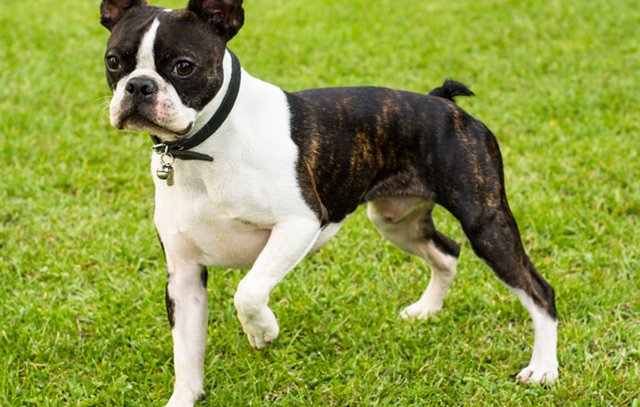Choosing the Right Dog for a Multi-Pet Household: Why the Aussiedor Stands Out
Bringing a new dog into your home is a joyful experience, but if you already have other pets—whether dogs, cats, or even smaller animals—the decision becomes more complex. Compatibility is key. Some dog breeds thrive in a multi-pet environment, while others may struggle with territorial instincts or dominant behavior. Understanding a breed’s social tendencies, temperament, and energy levels can help ensure a smooth transition and long-term harmony. For those considering adding a furry friend, detailed profiles of popular dog breeds for families can provide valuable insights to make the best choice for your household.
One standout breed that has earned a reputation for being an excellent addition to multi-pet homes is the Aussiedor—a mix between an Australian Shepherd and a Labrador Retriever. But before diving into why the Aussiedor is such a great choice, let's break down what makes certain dogs better suited for homes with other animals.
What Makes a Dog Good for a Multi-Pet Household?
1. Temperament and Socialization
The most important trait in a multi-pet-friendly dog is social behavior. Dogs that are naturally sociable, calm, and adaptable tend to blend better with existing pets. They are less likely to be aggressive, territorial, or anxious around others.
2. Prey Drive and Herding Instincts
Some breeds, especially working and herding dogs, may have strong instincts to chase or herd smaller pets like cats or rabbits. While this behavior isn’t always aggressive, it can create tension or stress in the household if not managed early on.
3. Energy Level and Play Style
Dogs with high energy often enjoy having companions to play with—but only if their play style is respectful and not too rough for smaller or older animals. Matching energy levels between pets helps reduce friction and prevents one from overwhelming the other.
Why the Aussiedor Is a Great Fit for Multi-Pet Homes
The Aussiedor, a hybrid of the Australian Shepherd and Labrador Retriever, combines the best of both worlds. Often referred to as the Australian Shepherd Lab Mix, this crossbreed inherits the intelligence and herding instincts of the Aussie along with the friendly, loyal nature of the Lab. The result is a sociable, trainable, and energetic dog that thrives in family settings—especially in homes with multiple pets. To keep your pet healthy and looking its best, it's important to maintain a regular Australian Shepherd Lab Mix grooming schedule as part of their care routine.
Here’s why this breed mix is often a top pick for multi-pet families:
Friendly and Social: Labradors are famously people- and pet-friendly. This outgoing nature carries over in the Aussiedor, helping it interact peacefully with both dogs and non-dog pets.
Intelligent and Trainable: Both parent breeds rank high in intelligence. Aussiedors are quick learners and respond well to training, making it easier to teach them appropriate boundaries with other animals.
Balanced Energy: While they are energetic and playful, they can also relax and adapt to calmer environments, especially with proper exercise.
Low Aggression Levels: Aussiedors typically lack the aggressive tendencies found in some guarding or dominant breeds, making them more accepting of newcomers in their territory.
Early socialization is still essential, but this mix has the right genetic tools to thrive in a social home.
Other Dog Breeds That Do Well with Multiple Pets
While Aussiedors are excellent, they aren’t the only good choice. Here are some other breeds that are known for their compatibility with other pets:
🐾 Boston Terrier
The Boston Terrier, often called the "American Gentleman," is a small dog with a big heart. Bostons are incredibly affectionate and social—not just with people, but with other pets too. The Boston Terrier is a friendly and affectionate dog, making it a wonderful companion for families and individuals alike.
Calm and Gentle Temperament: Boston Terriers are polite and rarely show aggression, even when introduced to new animals.
Easygoing Play Style: They’re playful but not overbearing, making them great companions for smaller or older pets.
Highly Adaptable: They do well in both small apartments and larger homes, and their adaptability extends to new animal companions.
Low Prey Drive: Unlike many terriers, Bostons don’t have a strong instinct to chase smaller animals like cats or rodents.
Their people-pleasing nature and mild temperament make them an ideal choice for multi-pet homes, especially for first-time dog owners.
🐾 Shih Tzu
The Shih Tzu is a toy breed known for its calm, affectionate demeanor and regal appearance. Originally bred as a companion dog for Chinese royalty, Shih Tzus live to love—and that extends to fellow pets. Their gentle nature and loyalty are just a few reasons why the Shih Tzu is the perfect family pet, bringing joy and companionship to households of all sizes.
Extremely Companionable: These dogs enjoy cuddling and companionship more than chasing or roughhousing.
Peaceful and Non-Dominant: They’re not competitive or territorial, which reduces potential tension with other pets.
Gets Along with Cats: Their small size and quiet nature make them one of the better dog breeds to live with felines.
Low Aggression Levels: They rarely instigate conflict, and they can be taught to tolerate the energy of younger, more active animals.
Shih Tzus are great for calmer households that want a mellow friend for both their human and animal family members.
🐾 Yorkshire Terrier
Don’t let the tiny size of the Yorkshire Terrier fool you—these dogs are bold, curious, and surprisingly sociable. Despite their small stature, Yorkies have big personalities and are known for their energetic, fearless nature. They thrive on human interaction and often form strong bonds with their families. However, their spirited attitude can sometimes make training a challenge, which is why it’s important to use the best training methods for Yorkshire Terriers. Positive reinforcement, consistency, and early socialization are key to helping these little dogs become well-mannered companions while still embracing their lively spirit.
Highly Intelligent: Yorkies are quick learners and can be trained to respect the boundaries of other pets.
Confident and Spirited: They’re outgoing without being aggressive, and their fearlessness makes them fun companions for other small animals.
Great with Familiar Pets: When raised alongside other dogs or cats, they often form strong bonds.
Manageable Size: Being so small means they are less physically intimidating to other animals in the house.
With early training, Yorkies can adapt well to homes with pets of all sizes—especially if they’re introduced while young.
🐾 Cavalier King Charles Spaniel
The Cavalier King Charles Spaniel is one of the most affectionate and socially intelligent breeds you’ll find. Their soft eyes and gentle demeanor make them naturally non-threatening to other pets. Whether in a small apartment or a spacious home, the Cavalier King Charles Spaniel is adaptable to various living situations, making them an ideal companion for families, singles, and seniors alike.
Affectionate and Mild-Mannered: These dogs are happiest when cuddled up with a friend—human or animal.
Blends Easily into Groups: Cavaliers are not alpha-type dogs. They’re more likely to defer to others than assert dominance.
Low-Prey Drive: They don’t tend to chase smaller animals, making them ideal for homes with cats or rabbits.
Emotionally Sensitive: They pick up on household vibes and usually avoid conflict.
If you're looking for a true peacemaker in your pet crew, the Cavalier King Charles Spaniel is a top-tier choice.
🐾 Bernedoodle
A mix of the Bernese Mountain Dog and the Poodle, the Bernedoodle is intelligent, friendly, and deeply loyal. This breed is great with both kids and animals, making them a popular choice for families looking for a loving and adaptable pet. However, like all breeds, Bernedoodles can be prone to certain health issues inherited from their parent breeds. Managing health conditions in Bernedoodles through regular veterinary check-ups, a balanced diet, and proper exercise is essential to ensure they live a long, happy life. With the right care, Bernedoodles thrive as affectionate and devoted companions.
Loving and Protective: Bernedoodles are gentle giants who care deeply for their family members, including other pets.
Playful but Polite: Their size might seem intimidating, but they are careful and considerate around smaller animals.
Smart and Trainable: Poodle smarts combined with the gentle nature of the Bernese makes training easier.
Great Emotional Balance: They’re less prone to jealousy or territorial outbursts than some other large breeds.
If your household includes active pets or playful dogs, the Bernedoodle will fit right in without causing friction.
🐾 Schnoodle
The Schnoodle is a cross between a Schnauzer and a Poodle. This lively and affectionate hybrid is known for its adaptability and high intelligence, making it an excellent choice for families and individuals alike. Schnoodles are energetic and eager to please, which makes training them enjoyable and rewarding. However, like all mixed breeds, it’s important to be aware of health issues in Schnoodles to watch out for, such as hip dysplasia, allergies, and certain genetic conditions inherited from their parent breeds. Regular veterinary care, a balanced diet, and proper exercise can help keep your Schnoodle healthy and happy for years to come.
Extremely Trainable: Thanks to the Poodle genes, Schnoodles pick up new rules quickly—great for learning how to behave with other pets.
Cheerful and Social: They love being part of the group and usually seek out companionship with other pets.
Varying Sizes: Whether toy, mini, or standard, Schnoodles can suit homes with different-sized animals.
Protective but Not Aggressive: They may bark at first but usually warm up quickly to new animal companions.
With proper introductions and consistent reinforcement, the Schnoodle makes a loving, entertaining member of any pet-filled household.
Tips for Introducing a New Dog to a Multi-Pet Home
Even with a dog-friendly breed like the Aussiedor, the introduction process is vital. Here are a few tips to ensure a smooth adjustment:
Start with Neutral Territory: If possible, introduce the new dog outside the home to avoid territorial behavior from your current pets.
Go Slow: Don’t rush the introduction. Let pets sniff and observe each other gradually.
Supervise All Early Interactions: Always be present during the first few days or weeks.
Use Positive Reinforcement: Reward calm and friendly behavior with treats and praise.
Establish Boundaries: Create separate spaces for each pet to retreat when needed.
Final Thoughts
Choosing the right dog for a multi-pet household comes down to temperament, compatibility, and socialization. The Aussiedor stands out as a strong candidate, blending friendliness, trainability, and balanced energy. However, other breeds like the Boston Terrier, Shih Tzu, Yorkshire Terrier, and Bernedoodle also make wonderful choices for families with multiple pets.
No matter the breed, the key to success lies in early socialization, consistent training, and a mindful introduction process. With the right approach, your new dog can become a happy and peaceful member of your multi-pet family—especially if you're considering emotional support benefits and planning to get an emotional support letter for your pet.






